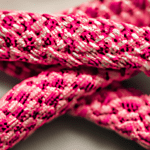What Defines a Scientific Approach: A Complete Guide
A scientific approach is characterized by a systematic and objective method of inquiry that aims to understand and explain the natural world. It involves a rigorous process of observation, experimentation, and analysis to generate reliable and valid knowledge. In this article, we will explore the key elements that define a scientific approach and how it contributes to the advancement of various fields of study.
1. Observation and Questioning
The first step in a scientific approach is careful observation and questioning. Scientists keenly observe phenomena or events in the natural world and ask relevant questions about their causes, patterns, or relationships. This initial stage helps to identify gaps in knowledge and formulate research objectives.
2. Formulating Hypotheses
Once scientists have identified a research question, they develop hypotheses. A hypothesis is an educated guess or a proposed explanation for a specific phenomenon. It is based on existing knowledge and serves as a starting point for further investigation. The formulation of a hypothesis is crucial as it guides the subsequent research process.
3. Designing Experiments
To test the validity of a hypothesis, scientists design experiments. Experimental design involves planning and controlling variables to ensure accurate and reliable results. By manipulating independent variables and measuring dependent variables, scientists can gather data to support or reject their hypotheses. The experimental design should be carefully constructed to minimize bias and confounding factors.
4. Data Collection and Analysis
During the experiment, scientists collect data through various methods such as observations, measurements, or surveys. The collected data is then analyzed using statistical techniques to identify patterns, trends, and relationships. Statistical analysis helps scientists draw meaningful conclusions from the data and determine the significance of their findings.
5. Drawing Conclusions and Making Inferences
Based on the analysis of the data, scientists draw conclusions and make inferences about the phenomenon under investigation. They evaluate whether the results support or refute the initial hypothesis. Conclusions should be based on evidence and logical reasoning, and any limitations or uncertainties should be acknowledged.
6. Peer Review and Publication
Scientific research undergoes a rigorous process of peer review before publication. Peers, who are experts in the field, critically evaluate the research methodology, data analysis, and conclusions. This ensures the quality and validity of the research findings. Publication allows the scientific community to access and build upon the knowledge generated, promoting further scientific advancements.
7. Replication and Verification
A crucial aspect of the scientific approach is the replication and verification of research findings. Other scientists attempt to replicate the experiments and obtain similar results. If the findings can be consistently reproduced, it strengthens the validity and reliability of the original research. Replication also allows for further exploration and refinement of the research question.
In conclusion, a scientific approach is characterized by careful observation, questioning, hypothesis formulation, experimental design, data collection and analysis, drawing conclusions, peer review, and replication. This systematic and objective method of inquiry enables scientists to generate reliable knowledge and contribute to the advancement of various fields. By following these steps, researchers can ensure the integrity and credibility of their work, ultimately benefiting society as a whole.




